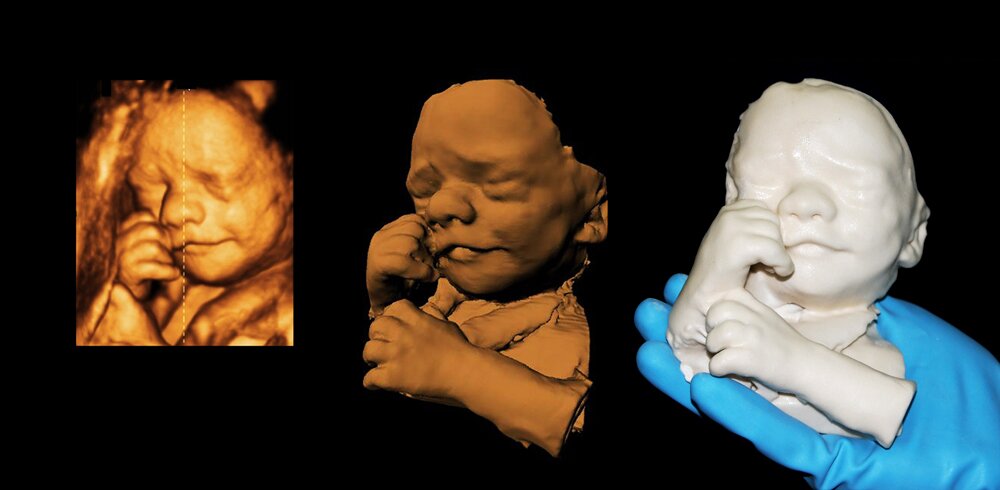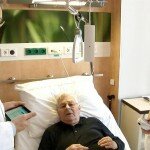
3D sonograms let blind expectant parents “see” their babies
Jorge Roberto Lopes dos Santos, an industrial designer with the Instituto Nacional de Tecnologia in Brazil, is giving doctors a new way to print sonograms for their patients — as life-size replicas. The prenatal sonogram is a life-changing moment for many expectant parents, giving rise to the inherent value these images hold whether as printouts passed among family members or posts on social media. It’s one of the joyous benchmarks of pregnancy, but one that has been elusive to the visually impaired. Innovations in 3D printing, however, could change that.
Dos Santos’s company, Tecnologia Humana 3D, has been developing new ways to build three-dimensional computer models using data from sonograms and other imaging techniques after initially setting out to enhance prenatal diagnostic tools. The work took a new direction when dos Santos realized that printing these models would give visually impaired mothers-to-be a chance to meet their babies in utero. “We work mainly to help physicians when there is some eventual possibility of malformation,” dos Santos said. “We also work for parents who want to have the models of their fetuses in 3D.”

Tecnologia Humana designs the models with sophisticated programs that produce highly detailed simulations of a fetus’ anatomy that doctors can examine virtually. They can swoop through the lungs and explore the cavities of the heart in search of problems that may require intervention. Prior journeys have found Down syndrome and cleft lip, dos Santos said in a recent paper. Making a tangible model of a fetus requires one other step — plugging that data into a 3D printer, a device that can create objects by laying down successive layers of material.
Neva Fairchild, the resident expert on independent living at the American Foundation for the Blind, said the models would also benefit visually impaired family members looking to share in the experience of seeing their loved one’s unborn child for the first time.
A model would allow people with impaired vision to know the size of a fetus while giving them a new appreciation of those tiny toes and fingers. Fairchild, who is legally blind and can only discern shapes and shadows, speaks from experience. “Fifteen months ago, my first grandchild was born and they had numerous sonograms and I missed out on all of that,” she said.

Fairchild said it’s important, however, for the producers of these models to keep cost in mind. Many recent inventions designed to aid the visually impaired are too expensive for the people they’re meant to help, and most insurance policies are reluctant to cover these kinds of expenses, she said.
But dos Santos said his reliance on common imaging techniques, such as the MRI and the CT scan, keeps costs relatively low — about $200 for a full model of a fetus at 12 weeks, and about $300 for the face and arms of a fetus at 24 weeks.
http://io9.com/3d-sonograms-let-blind-expectant-parents-see-their-ba-472999403
Pin It

Google+

Org Medlines


















Leave a Reply